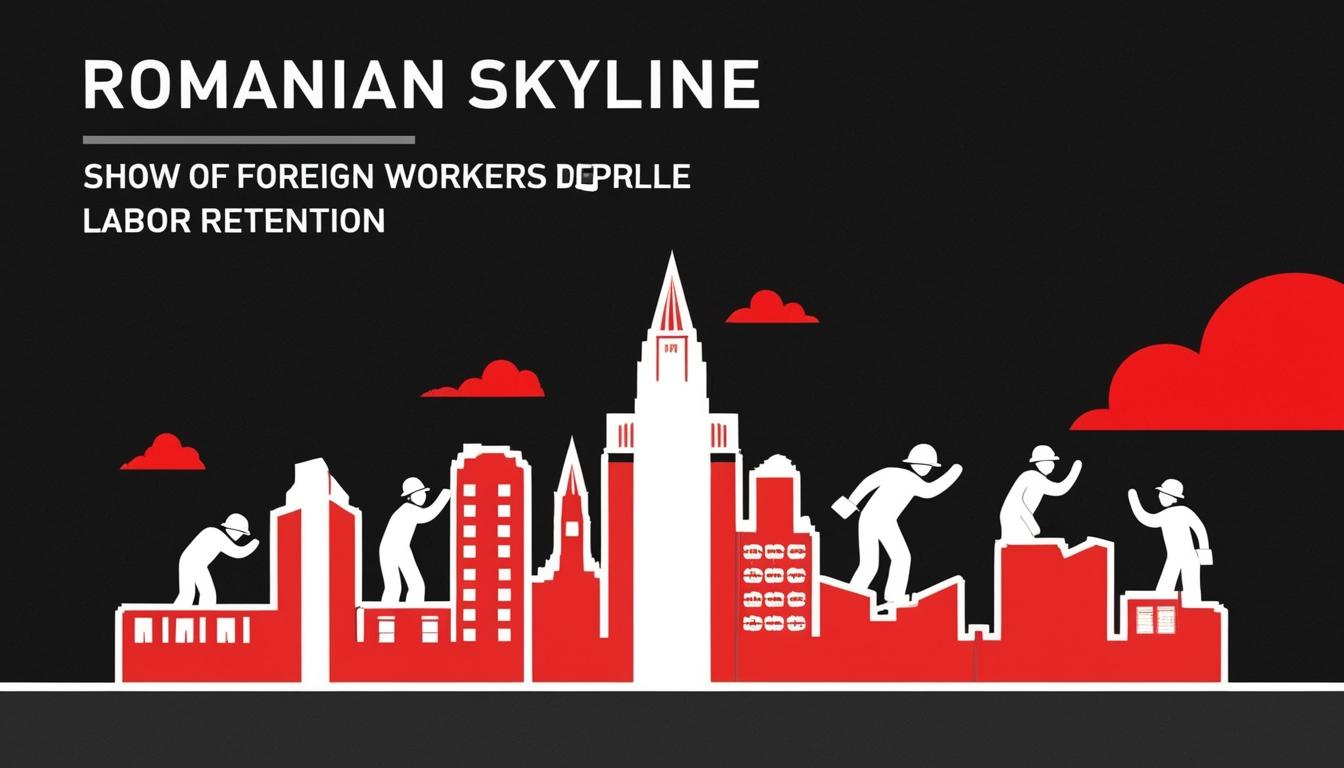Romania is currently facing a significant challenge within its labour market, particularly when it comes to retaining foreign workers. The nation aimed to address pressing labour shortages in 2024 by hiring 100,000 foreign employees. However, reports indicate that approximately 65,000 of those workers vacated the country by the end of the year, shedding light on a deeper issue surrounding worker retention and integration into the workforce.
Since 2020, Romania has granted access to approximately 350,000 non-EU workers, predominantly employed in sectors such as construction, hospitality, and delivery. As of the conclusion of 2024, fewer than 150,000 of these foreign workers were still employed in Romania. Ana Călugăru from a local recruitment platform remarked that many Asian job seekers perceive Romania merely as a transit point to Western Europe, where financial incentives and working conditions are often more appealing. This trend, combined with challenges related to integrating into the local workforce, has intensified the problem.
The persistent labour shortages in Romania are exacerbated by a rising unemployment rate, particularly in certain regions where figures exceed 9%. Data from the National Institute of Statistics (INS) as of October 2024 indicates that there are over 460,000 individuals jobless in the country, a number that corresponds to the population of a mid-sized county. Urban centers, such as Bucharest and Ilfov, report unemployment rates of less than 1%, in stark contrast to rural counties like Vaslui and Teleorman, which struggle with significantly higher unemployment figures.
Simultaneously, the global rise of artificial intelligence (AI) and automation introduces additional complexities for Romania’s labour landscape. According to the World Economic Forum's Future of Jobs Report, while AI is set to enhance productivity and generate new job roles, it also threatens to displace numerous positions, particularly in data entry, secretarial duties, and cash handling. Advanced economies are anticipated to reap the benefits of AI integration more rapidly, experiencing substantial productivity gains and increased income for affected workers. Conversely, countries like Romania may undergo a slower transition owing to lower levels of digital and technological adaptation.
Romania's labour market is also hampered by systemic barriers such as high inactivity rates among the working-age population, a substantial number of students lacking basic skills, limited participation in lifelong learning initiatives, and a low percentage of adults possessing fundamental digital skills. Employment figures indicate that the employment rate for individuals aged 15 to 64 sits at 63.3%, with men (71.4%) and urban residents (68.9%) experiencing higher rates of employment. Nevertheless, youth unemployment remains particularly concerning, nearly reaching 27%, a figure that is considerably above the EU average of 14.5%.
The structure of Romania’s workforce reveals that 11.9% are engaged in agriculture, 33.2% in industry and construction, and 54.9% in services. The private sector employs 82.8% of the labour force, while the public sector engages approximately 16.6%. Although there have been efforts to attract foreign workers to fill critical gaps in construction and hospitality, these initiatives provide only partial remedies to the underlying structural challenges facing Romania's labour market.
To navigate these challenges, Romania must prioritise several strategic actions, including the enhancement of integration programmes for foreign personnel, improving wages and working conditions to better compete with Western European markets, investing in digital skills and lifelong learning opportunities to equip its workforce for future demands, and addressing youth unemployment through targeted training and career initiatives. While the Romanian government plans to recruit an additional 100,000 foreign workers in 2025, the pressing challenge remains in creating an environment that effectively retains talent—both local and foreign—while adapting to the ever-evolving global landscape characterised by increased digital connectivity and automation.
Source: Noah Wire Services
